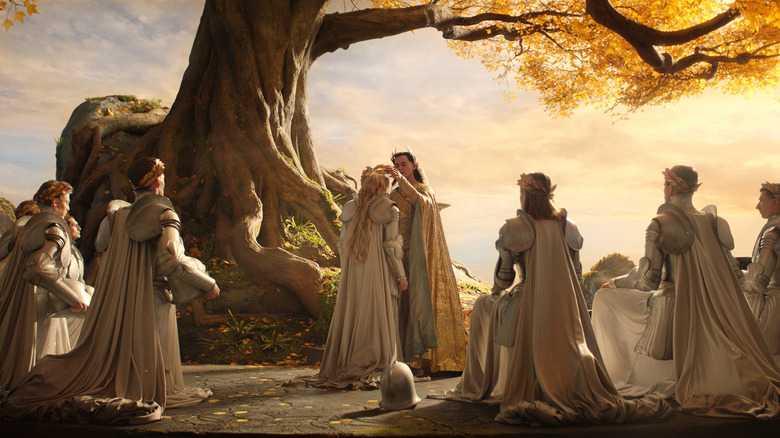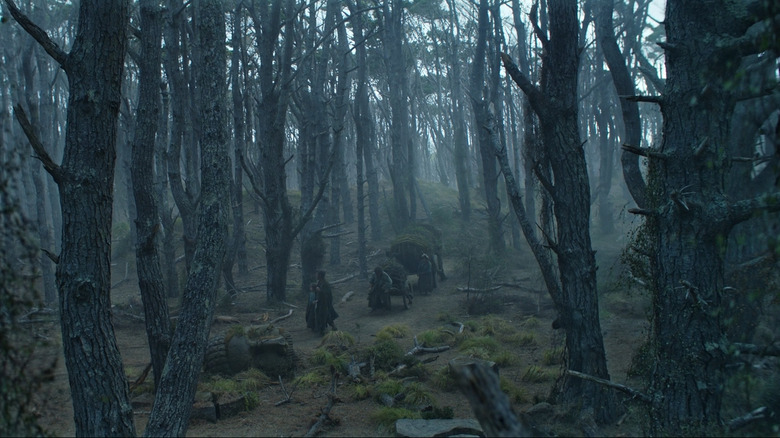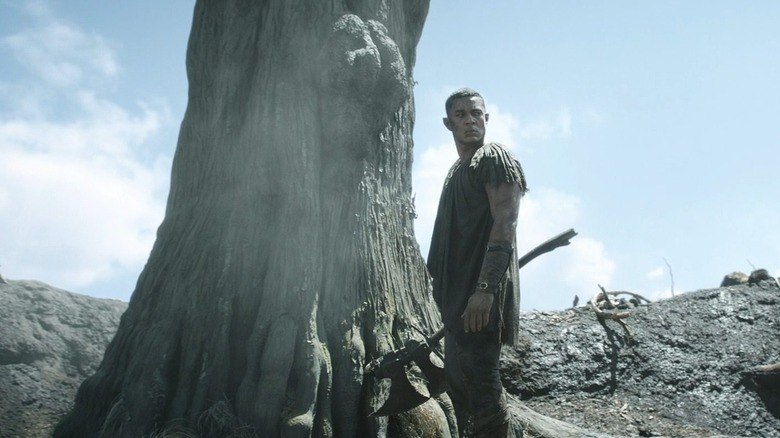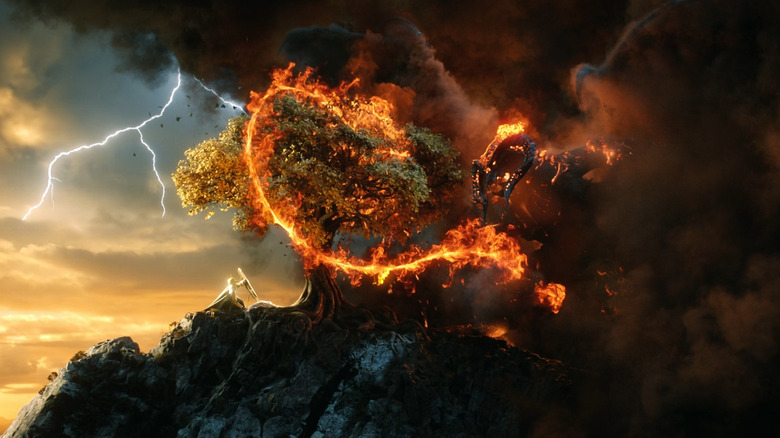What Makes Something Tolkien-Esque? The Rings Of Power And The Importance Of The Trees
Amidst a record-breaking budget and sky-high expectations, "The Lord of the Rings: The Rings of Power" has managed to be a love letter to J. R. R. Tolkien's work that paves its own road to adapting the grandest parts of the canon. Moreover, in terms of its visual coherence, the series is a distant relative to Peter Jackson's original trilogy. It feels like it inherently belongs in that rich fantasy world dreamed up by the beloved author, while also adhering to what worked in live-action adaptations.
But what makes something Tolkien-esque? Is it epic battles and high-fantasy action? Or is it something more thematic in purpose, but equally all-encompassing in scale? There's one thing that manages to encapsulate all of these: the trees in "The Rings of Power," of course.
With a handful of episodes left in the first season, the series has firmly planted its roots in establishing the impending return of evil in the form of its effects on the environment. "The Rings of Powers" juggles several major storylines at once, connecting them through the threat of the Dark Lord Sauron and his subjects. It is no mistake that every week we're swept away by the treacherous journey each character finds themselves. But a major throughline is beginning to reveal itself, one that is closely attached to the grand message of Tolkien's work. The devastation that awaits Middle-earth is manifesting in the very ground these characters walk on — not unlike our own reality.
A warning in the woods
In the fifth episode, the harfoots continue their journey across Middle-earth in search of a new home. Vast, sweeping lands provide beautiful scenery for the big-budget production, but they also juxtapose what the traveling tribe encounters later in the episode. The harfoots eventually arrive at a stretch of woods, desolate and lacking any significant resources. What was presumably once green and flourishing is gray and leafless, a sign that evil has already infected Middle-earth.
The harfoots have yet to overtly face the enemy, but they are witness to the declining state of Middle-earth. One of the foundational aspects of the harfoots is their separation from other groups in civilization, opting to not concern themselves with the world around them unless it affects them directly. Yet, "The Rings of Power" questions their paradoxical beliefs through the rebellious Nori Brandyfoot (Markella Kavenagh) and her family. Rejecting the signs of their evolving climate will not do the harfoots (or anyone else) any good, and I hope to see optimism win out over the underlying despair that currently grips Middle-earth.
As implied thus far, the woods encountered by hartfoot is just one of several instances where "The Rings of Power" emphasizes the importance of using trees to tell a story.
Ravaging the land
Earlier in the season, Arondir (Ismael Cruz Córdova) and other elves found themselves enslaved by a camp of orcs tunneling their way to the Southlands. The surrounding environment is revealed to be barren, once full of life but now ravaged by Adar (Joseph Mawle) and his army. Worst yet, Arondir is forced to cut down a tree blocking their path and, for a moment, shows appreciation for it before hacking away. The elf recognizes and even grieves for the loss of plant life, especially at his own hands.
For the uninitiated, the Southlands are meant to become Mordor, the base of operations for Sauron and the orcs. A wasteland filled to the brim with evil, Mordor is a familiar location for those who have read the novels and seen the film trilogy. Mordor has long stood as a symbol of the pitfalls of industrialization, an intentional allegory for the reality Tolkien found himself in. Judging by his fictional work, it comes as no shock that Tolkien was an environmentalist. His personal experience with the dark side of industrialization and the effect it has on the environment and the people living in it curated a worldview that emanates throughout all of his written work. "The Rings of Power" honors that in more ways than one, utilizing the thematic weight of Tolkien's work to expand on the lore without losing the essence of it.
Not only do the trees serve as a catalyst for exemplifying the destruction that awaits, but they also bring hope to those bound by them.
Hope lies within them
The fifth episode expands on an important piece of elf history that was not previously detailed by Tolkien or in the movie trilogy. After the dwarf Prince Durin (Owain Arthur) revealed to Elrond (Robert Aramayo) the discovery of mithril, the elf becomes aware of the true purpose of his mission to partner up with Khazad-dûm. According to a fable that Elrond recites for Gil-galad (Benjamin Walker), the ore found deep in their world is a product of an elven warrior and a Balrog battling it out on the peaks of the Misty Mountains. During the fight, lightning struck the tree that stood between them, which apparently contained the last of the lost Silmarils. The convergence of darkness and light brought upon an entirely new element that contained the positive aspects of the opposing forces.
The mithril is so powerful, that Gil-galad believes it could save the elven race as it heads towards extinction, which is showcased by unveiling a corrupted tree withering away from the bark to the leaves. Remember: it was the light of a very bright tree that once illuminated Valinor before Morgoth snuffed it out during the First Age.
At this point, "The Rings of Power" is not subtle about the deterioration of the environment and what it implies for those living in it. The existential issue the elves find themselves wrapped up in is not only reserved for them, either. Simply put, the world is dying, and the warning signs are out there.



